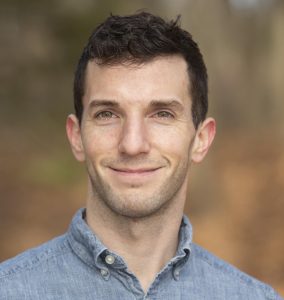Presentations
Download PDFs of the ECEC23 conference presentations. – Coming Soon!
Keynote Presentations
Latonya Jackson – Assistant Research Professor of Biological Sciences, University of Cincinnati

Biography: Dr. Latonya Jackson is a native of Lawtell, a small rural town in Southwest Louisiana. She is an Ecotoxicologist by trade and an Assistant Professor of Biology at University of Cincinnati. Dr. Jackson’s research focuses on aquatic toxicology where she studies the effects of pharmaceuticals, contaminants, and toxins in freshwater fish. She is a graduate of the University of Louisiana at Lafayette where she received her Doctorate’s degree in Environmental and Evolutionary Biology with an emphasis in Ecotoxicology. She is a proud wife and mother and has a passion for making the environment a better and safer place for the next generations to enjoy. Dr. Jackson is passionate about sharing her knowledge and research about how to keep our environment and aquatic ecosystems safe for all to live and enjoy in Ohio. She is a fervent advocate for environmental and aquatic issues and believes that “it is our responsibility as human beings to care for our home, the earth”.
Scientists are continuing to sound the alarm about the widespread occurrence and adverse environmental and health-related impacts of various types of contaminants of emerging concern (CECs). With the increasing scientific knowledge, ecological apprehensions, human health related issues, socio-economic problems and awareness, and the disproportionate community exposures, people are more concerned about the widespread CECs worldwide. Among CECs, pharmaceuticals, cosmetics, biomedical, personal care products (PCPs), endocrine disrupting chemicals (EDCs), and “forever chemicals” (PFoA & PFAS) are of paramount concern. The presence and persistence of CECs in the aquatic ecosystem continue to be of interest and concern around the globe. CECs are consistently being discharged into the aquatic environments where they pose serious health issues and affect entire ecosystems. Of the CECs, endocrine disrupting chemicals substantially cost society as a result of increases in disease and disability but-unlike other toxicant classes such as carcinogens-have yet to be codified into regulations as a hazard category. Decades of scientific studies have shown that EDCs have been found to feminize aquatic organisms and link them to changes in reproductive health, development, growth, behavior, immune responses, sexual differentiation and maturity, nervous system functions, cancers, obesity, heart health, and neurological and learning disabilities. Even more concerning is that BIPOC (Black, Indigenous, & People of Color) and low-income communities are disproportionately and chronically exposed to various EDCs and CECs simultaneously. This study examines the impacts of EDCs on aquatic organisms and humans and sheds light on why DEIJ in this area of science is so important to the environment and the human race.
Jon Petali PhD, DABT – Toxicologist, New Hampshire Department of Environmental Services

Biography: Jonathan Petali, PhD, DABT, is the toxicologist for the New Hampshire Department of Environmental Services where for nearly 5 years he has supported NH’s efforts to address per- and polyfluoroalkyl substances (PFAS). Dr. Petali aided the development of NH’s drinking water standards for 4 PFAS, conducts risk assessment of aquatic biota for the safety of human consumption and ecological risks, and provides technical support for a growing number of PFAS-related site investigations across various environmental media within this New England state. In addition, Dr. Petali supports the agency’s risk communication with community members and stakeholders impacted by PFAS and the evolving scientific and regulatory landscape. He holds a PhD in Environmental Toxicology from the University of Nebraska Medical Center’s College of Public health, and a BS in Biological Sciences from Wright State University. Following his doctoral training, he was a postdoctoral associate with the University of Nebraska-Lincoln’s Department of Civil and Environmental Engineering, where he studied the fate and transport of merging contaminants in Midwestern waterways.
Per- and polyfluoroalkyl substances (PFAS) remain a pressing and complex issue for communities impacted by contamination, academic researchers, regulated industries and government agencies. New Hampshire has grappled with these challenges since 2014 when PFAS were discovered in a local public water system. Since then, our PFAS investigation has expanded across the state’s geography and various environmental media including water, air, soil, fish and wildlife, biosolids, wastewater effluent and more. While the data collected from this investigation is critical to informing decision making, the “how” and “why” behind this work highlights the ways PFAS are reshaping the way regulators think about contamination. More importantly, it has reminded us of who we need to bring to the table to address problems at the grand scale of PFAS. This presentation will share PFAS data from the “Live Free or Die” state as well as highlight the opportunities for researchers at a local level and how the development of collaborative research relationships is critical to addressing emerging contaminants.
Invited Speakers
Rae McNeish – Assistant Professor, California State University Bakersfield
Biography: Rae McNeish is an Assistant Professor at California State University, Bakersfield. Her research focuses on terrestrial-aquatic connections and how anthropogenic activities, pollutants, and terrestrial management practices impact freshwater ecosystems. Current research projects are exploring the ecological and biological connections associated with anthropogenic litter and microplastics in the environment while working towards establishing standardized microplastic methodologies. Dr. McNeish’s goals are to contribute to the broader understanding of freshwater ecosystems, engaging students in research, and communicating results to broader communities while conducting science that serves these communities.
Anthropogenic activities and changes in land-use and landcover play critical roles in the terrestrial-aquatic linkages associated with the abundance and transport of ecosystem subsidies (e.g., leaf litter, woody debris) to river systems. Anthropogenic litter (i.e., human trash) has been documented in terrestrial, aquatic, and atmospheric systems, as well as in food webs, suggesting that these materials could be moving through ecosystems similarly to naturally occurring materials. Previous research has focused specifically on anthropogenic subsidies in the form of chemical contaminants; however, the study of anthropogenic litter from the perspective of ecological subsidies is rarely applied and could advance the field of study. I present a series of research projects for understanding how anthropogenic litter functions similar to cross-system subsidies and is affected by environmental conditions and anthropogenic activities linked with ecosystem health and function. This research helps to illustrate that fundamental ecological concepts (i.e., community ecology, functional diversity, ecosystem subsidies) are critical to understanding the sources, transport, fates, and biological interactions of anthropogenic subsidies in linked terrestrial-freshwater ecosystems. The approach will provide insight into the plastic cycle and the prevention and management of anthropogenic materials in the environment.
Zhenyu Tian – Assistant Professor, Northeastern University
Biography: Zhenyu Tian is an assistant professor at Northeastern University. He received his Ph.D. from UNC-Chapel Hill, where he studied the transformation products and co-occurring pollutants of PAHs in contaminated soil. During his postdoc research at the University of Washington Tacoma, he applied non-target screening to identify emerging contaminants in water and biota. With the research group at UWT, he identified 6PPD-quinone, a ubiquitous tire rubber chemical that kills coho salmon via urban stormwater. As an environmental chemist, Zhenyu is interested in the fate, transport, and remediation of organic contaminants. He is curious about the contaminants that are truly relevant to public health and the ecosystem.
A variety of additives are used in tire manufacturing to achieve desired properties, and their environmental behavior, toxicity, and fate have not been thoroughly studied. Many additives undergo uncontrolled environmental transformation, resulting in unpredictable transformation products. These are exemplified by the discovery of 6PPD-quinone (6PPD-Q) in urban stormwater of the Pacific Northwest, where coho salmon annually exhibit unexplained acute mortality upon stormwater exposure when adult salmon migrate to urban creeks to reproduce. Using effect-directed analysis, we are able to identify and isolate 6PPD-quinone from tire wear particle leachate, and confirmed it as a transformation product of a ubiquitous tire rubber additive (6PPD). 6PPD-quinone is acutely toxic to juvenile coho salmon (LC50 = 95 ng/L), and it has been found toxic to three other fish species. It has been widely detected in water, sediment, dust, and human urine samples around the world. More studies are needed to better understand the toxicity mechanism, human exposure, and fate of tire additives.